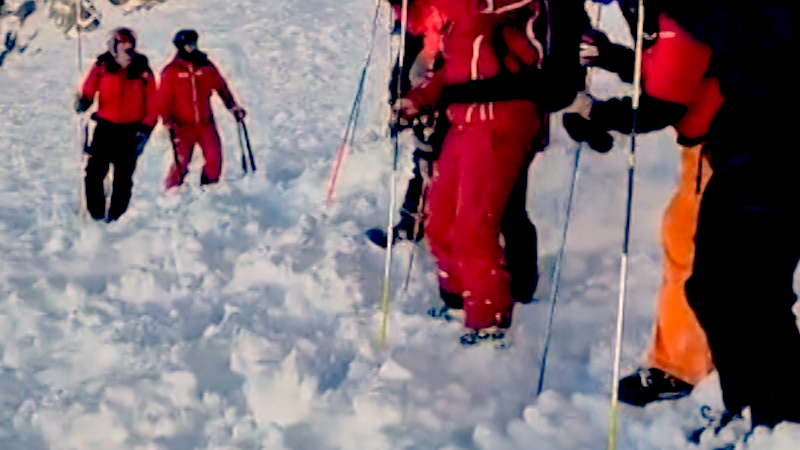Major snowstorm burying Virginia, Maryland and North Carolina
As a storm approaching the Atlantic coast buries portions of Virginia, Maryland and North Carolina in deep snow, enough snow to create slippery travel may spread into parts of the Northeast with ice farther south.
AccuWeather’s Ali Reid reported live from Norfolk on Feb. 19, as snow-covered roads caused major problems across the coastal area.
A cross-country snowstorm is moving to the Atlantic coast and is unloading a heavy accumulation on portions of Virginia, North Carolina, Maryland and Delaware. A moderate snowfall is in store for much of West Virginia. Some snow will extend north and west of this area, while icy conditions occur just to the south.
Some segments of the storm began their journey over the northern Pacific last week before spreading snow southeastward across the Rockies and then onto the central Plains early this week. An injection of Gulf moisture has given the storm a boost as it rolls eastward.

While the storm will fail to make a northward turn along the Atlantic coast, it will still deliver the biggest snowfall of the season for some areas before heading out to sea.
Norfolk and Richmond, Virginia; Winston-Salem and Raleigh, North Carolina; and Salisbury, Maryland, are among the towns and cities that are forecast to be walloped by several inches of accumulating snow from Wednesday to early Thursday. From 6-12 inches of snow is forecast with an AccuWeather Local StormMax™ of 25 inches to occur in southeastern Virginia and part of Maryland's Eastern Shore.

The snow can fall at a rate of 1-2 inches per hour for a time into Wednesday night. At this intensity, crews may not be able to keep up with the storm and some major highways, including interstates 64, 85 and 95, may be forced to close. Motorists could become stranded.
The storm will have enough northward turn late Wednesday night to Thursday to bring up to a few inches of snow to Cape Cod, Massachusetts.

Airline delays and flight cancellations will mount Wednesday night, with lingering effects on Thursday.
A second component to the storm fueled by the jet stream will promote some light snow to fall all the way back to the Ohio Valley and Great Lakes region, as well as the central Appalachians, the upper part of the mid-Atlantic coast and even in southern New England.
Snowfall in much of this zone will be spotty and will range from barely a few flakes to a couple of inches. The showery nature of this snow can create hazards for motorists ranging from a sudden drop in visibility to a quick covering of snow.

There may be a last-minute northward tug by the jet stream to deliver a very light but manageable accumulation in the Interstate 95 zone of the upper mid-Atlantic and southeastern New England, but a major snowstorm is highly unlikely from Washington, D.C., to Philadelphia, New York City and Boston.
GET THE FREE ACCUWEATHER APP
•Have the app? Unlock AccuWeather Alerts™ with Premium+
Because of a pool of very dry air to the north of the coastal storm, AccuWeather meteorologists expect a sharp gradation between several inches of snow in far southern New Jersey, eastern Long Island, and Cape Cod, Massachusetts, to a light coating to no snow at all just north and west from Wednesday night through Thursday night.
Farther south, a significant amount of sleet and freezing rain is spreading from central and southeastern North Carolina to northern South Carolina.

In eastern North Carolina, where more freezing rain occurs instead of sleet and snow, a buildup of ice on trees can lead to widespread power outages.
Even a small amount of ice or a wintry mix can make for dangerous conditions in cities such as Charlotte, Greenville and Fayetteville, North Carolina; and Greenville to Darlington, South Carolina.
Cold winds will again pick up in the wake of the coastal storm Thursday, but will not be as intense as the storm at the start of the week. As the trailing component of the storm swings eastward from the Midwest, intermittent snow and locally heavier snow showers can continue to cause trouble on the roads from northern Georgia and the Carolinas to upstate New York and New England.

The cold air may be significant enough to deter natural melting, which typically occurs in the Southern states in the wake of a winter storm. Any areas made wet by natural melting will freeze toward the evening as the temperature plummets.
Want next-level safety, ad-free? Unlock advanced, hyperlocal severe weather alerts when you subscribe to Premium+ on the AccuWeather app. AccuWeather Alerts™ are prompted by our expert meteorologists who monitor and analyze dangerous weather risks 24/7 to keep you and your family safer.
Report a Typo














